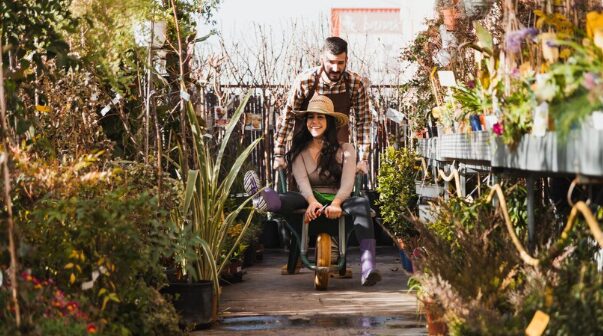A quiet afternoon in the garden feels incomplete without the gentle hum of bees or the flicker of butterflies darting between flowers. In Guildford and across Surrey, supporting pollinators is becoming more important as green spaces face increasing pressure from urban development.
These small creatures play a vital role in keeping gardens and ecosystems thriving by helping plants reproduce.
This guide will discuss practical ways to create a pollinator-friendly garden that benefits biodiversity while enhancing the beauty and purpose of your outdoor space.
Learn About Local Pollinators
Understanding which pollinators are active in your area is the first step toward supporting them effectively. In Guildford, common species include bumblebees, honeybees, solitary bees, butterflies, moths, and hoverflies.
Birds like robins and goldfinches also contribute to pollination by moving pollen between plants as they forage.
To learn more about these species, visit resources such as the Surrey Wildlife Trust or the Royal Horticultural Society, which offer helpful guidance on local pollinator behaviour.
Spending time in your own garden can also be informative. Observing which insects visit which plants helps you identify preferred food sources and seasonal trends. Keeping a simple journal or checklist of your sightings can make future planting decisions easier.
By learning what thrives in your area, you can support local pollinators more effectively and strengthen your connection to the environment around you.
Choose Native Plants That Work with Nature
Native plants are well-suited to the UK’s changing weather and are naturally aligned with local ecosystems. For gardeners in Guildford, this means reduced maintenance, greater resilience to pests and diseases, and increased appeal to local pollinators.
Species such as foxgloves, field scabious, knapweed, and common toadflax provide rich nectar for bees and butterflies. Trees and shrubs like hawthorn, holly, and hazel offer both food and nesting spaces, especially in the colder months.
For year-round support, aim to include a mix of early, mid, and late-season bloomers. Sourcing plants from local nurseries or native plant specialists can help ensure they’re well-adapted to the Guildford climate and soil.
A thoughtful selection creates a more balanced garden that supports wildlife without demanding constant upkeep.
Design with Diversity in Mind
Plant variety is essential when building a garden that supports pollinators throughout the year. Incorporate a blend of flowering perennials, trees, shrubs, herbs, and wildflowers to offer continuous feeding and shelter.
Think in layers. Ground-level plants such as thyme or creeping buttercup attract smaller insects, while taller plants like buddleia, honeysuckle, and wild cherry trees support butterflies, birds, and bees.
Try to group similar species together, which makes foraging more efficient and appealing for visiting insects. Planting in clusters also adds visual cohesion and makes your garden easier to maintain. Choose plants that thrive in your soil type and sun exposure.
Drawing up a simple planting plan or speaking to a professional gardener can help you achieve a layout that balances biodiversity with design.
Provide Water Sources
Pollinators need reliable sources of water, especially in warm or dry periods when natural supplies may run low. A simple shallow dish with stones or pebbles allows bees and butterflies to drink safely without the risk of drowning.
Position the dish in a sunny, open area near flowering plants, and change the water regularly to keep it fresh and free from pests. You could also create a puddling area for butterflies by partially burying a shallow container filled with damp sand and mineral-rich soil.
Small water features such as birdbaths or solar-powered fountains not only support wildlife but also enhance the appearance and tranquillity of your garden. Adding water sources is one of the easiest and most cost-effective ways to attract pollinators and encourage them to stay longer.
Avoid Pesticides and Chemicals
Chemical pesticides can do more harm than good when it comes to preserving biodiversity. They may eliminate harmful pests, but they often impact helpful pollinators and disrupt the natural balance in your garden.
Organic alternatives and natural pest control methods are safer and usually just as effective. Companion planting is one option—for example, marigolds can deter unwanted insects, while attracting beneficial species like ladybirds and hoverflies.
You can also plant herbs such as mint and basil, which repel common pests. Encouraging predatory insects by adding habitats or leaving parts of your garden undisturbed supports long-term pest control.
Healthy, well-fed plants are naturally more resilient, so prioritise soil quality, composting, and regular watering as part of your pest-prevention strategy. A well-balanced ecosystem reduces the need for intervention and supports sustainable gardening.
Create Safe Spaces for Nesting and Shelter
Pollinators need more than food. They also require places to rest, nest, and survive the winter. Creating a variety of shelter options will support a greater range of species throughout the year. Leave some patches of bare soil for solitary bees, who often burrow into the ground.
Incorporate native hedgerows such as blackthorn or dog rose to provide nesting areas for birds and safe hiding spots for insects. Allowing sections of your garden to grow naturally can also encourage beneficial wildlife.
For more structured shelter, build insect hotels using bamboo, hollow stems, wood, and twigs. These can be fixed to fences or trees in warm, sunny areas and provide refuge for ladybirds, lacewings, and solitary bees. Inspect them annually to keep conditions clean and safe.
A diverse range of shelter types helps support year-round pollinator activity.
Get Involved with Local Initiatives
Taking part in local initiatives is a great way to extend your impact beyond your own garden. In and around Guildford, there are several conservation groups and community gardening schemes that focus on pollinator-friendly practices.
Look for volunteer opportunities, attend workshops, or connect with other gardeners through local social media pages or gardening clubs. The Surrey Wildlife Trust and Guildford in Bloom often run events that encourage eco-friendly gardening.
Sharing your successes and ideas with neighbours can inspire others to take action. You could even encourage a community project or school garden focused on pollinator habitats.
Together, small individual efforts contribute to larger change and help Guildford become a greener, more sustainable place.
Conclusion
Supporting pollinators is a simple and effective way to enhance your garden while contributing to local biodiversity. By choosing native plants, avoiding chemicals, and offering shelter and water, you help create a space where bees, butterflies, and birds can thrive.
These small changes not only benefit wildlife but also improve the health and appearance of your garden throughout the year. In Guildford, where green space matters, even modest efforts can make a meaningful difference.
Whether you start with a wildflower patch or a bee-friendly herb bed, each step brings more life to your garden and supports the wider environment.



































